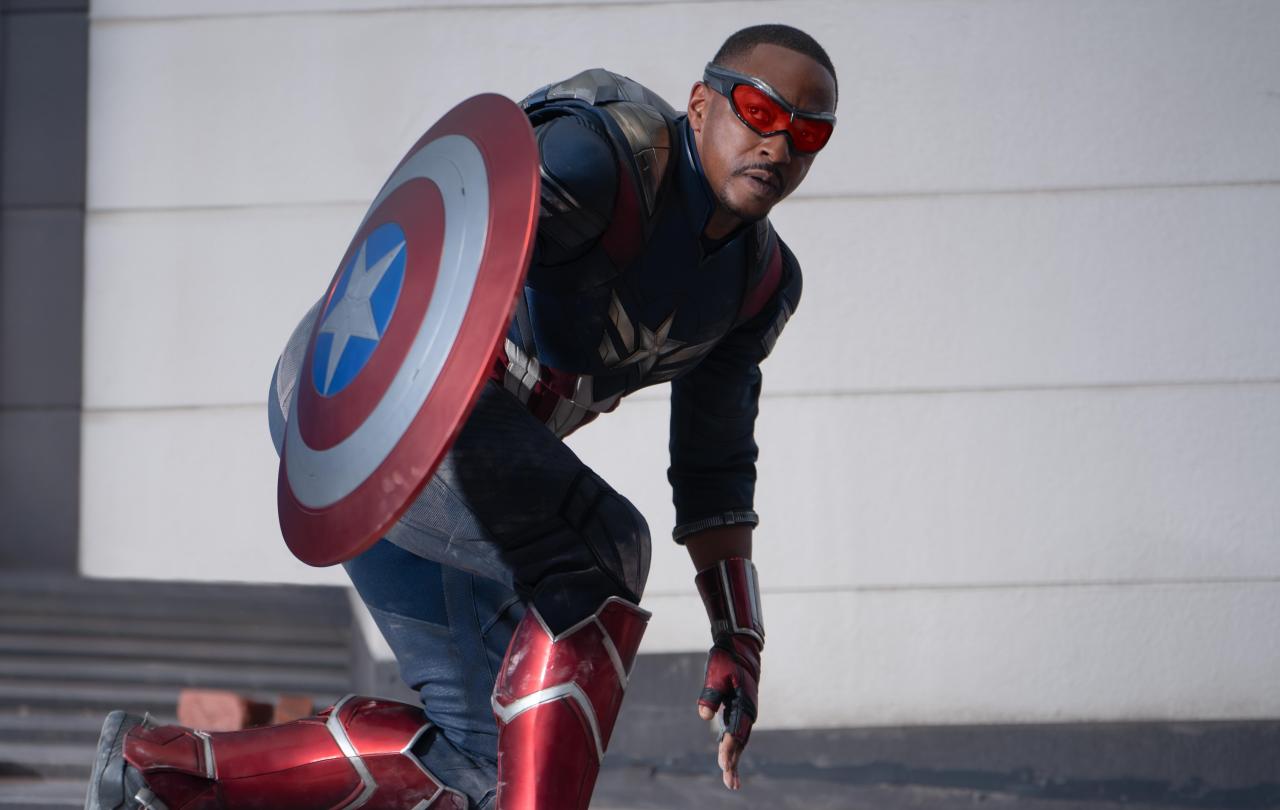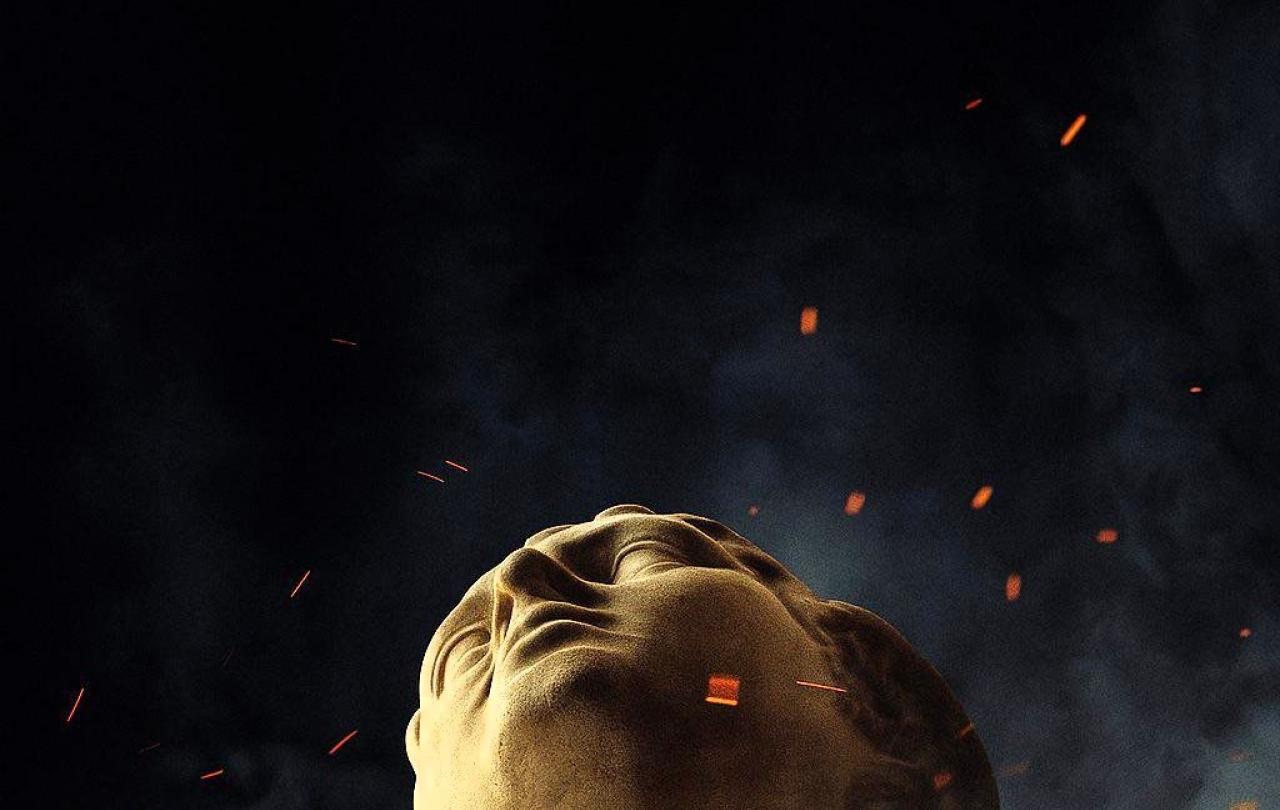
Captain America: Brave New World is the thirty-fifth film in the Marvel Cinematic Universe (MCU), and the fourth film focusing on the character of Captain America. It’s also something of a sequel to a passible Marvel TV series. There is so much baggage, so much lore, so much build-up to this film; a production which has the unhappy task of honouring the seventeen years of previous storytelling, setting up plot points that can be explored in future films, and giving us a satisfactory stand-alone cinematic spectacle. I wouldn’t wish such a burden on anyone – an impossible task.
Brave New World sees Sam Wilson fully inhabiting the role of superhero Captain America, a mantle bestowed on him by his friend and original Captain, super soldier Steve Rogers. Still doubtful of his worthiness and abilities, he seeks to wield the Vibranium Shield with style. He is sent on a mission to retrieve a stolen military secret from a group of mercenaries. He does so – with a few decent action set pieces – and is rewarded with an invitation to the White House.
The newly elected President, General Thaddeus ‘Thunderbolt’ Ross, is seeking to shed his past reputation as a warmonger by negotiating an international peace treaty. A newly discovered resource has the capability of changing the face of medicine, technological innovation, and especially warfare. Every great power covets it, and Ross wants to foster collaboration for the betterment of the planet. The gala event is ruined when Sam’s friend Isaiah Bradley, a super soldier from the Koren War who was wrongly imprisoned, goes all Manchurian Candidate and shoots at the President.
The peace treaty is in jeopardy. The President’s inner circle is compromised. There are secrets and lies that will not stay buried. There is a shadowy villain operating behind the scenes, determined to destroy the President’s reputation. Only one man can fight for truth, justice, and the American way: Captain America.
This is as much as I can say without spoiling the entire film.
Not that it would matter. The film is a bit of a mess.
Sam is proposed as an underdog (having not actual superpowers, only a suit of armour), but is shown to be essentially indestructible…he literally disables a missile by flying into it headfirst. There is no sense of tension or risk. This is not helped by lacklustre action and some genuinely appalling CGI. The plot is all over the place – a result of some rather obvious reshoots featuring green screen that even the most amateur filmmaker could’ve improved. Most of the secondary storylines peter out. New characters and introduced and given almost no personality or progression.
The script compensates for this by giving characters long monologues where they deliver clunky plot exposition and background information. This was inevitable. To understand the plot and characters requires one to have been a careful watcher of the previous films and television shows. I was somewhat impressed how the film managed to give a gentle introduction to the casual viewer, but it is very much at the expense of pacing and character development.
All of this is a great shame, as the performances are rather good. Anthony Mackie has always been a magnetic screen presence and manages to combine both charisma and pathos is an uncharacteristically restrained performance. Tim Blake Nelson enjoys himself as the puppet-master villain, oozing bile and sympathy in equal measure. Every minor friend and villain delivers their lines with real feeling. Bloody hell…even lovable grump Harrison Ford looks like he’s actually trying as President Ross.
Unfortunately, no amount of charisma can make up for a film that has no sense of itself. The shambles of a plot is matched by the shambles of a theme; a sadness, as there is so much potential. Sam Wilson is one of only a handful of black superheroes, and his friendship with Isaiah Bradley is partly based on their shared experience of race and discrimination in the face of honour and duty. This was introduced in the TV show and could’ve been explored further. Sam’s lack of superpowers could have been explored, had he been put in positions of genuine peril. His sense of inadequacy and overwhelming responsibility are mentioned, only to be quickly dismissed with a pep-talk from a throwaway cameo character. The concepts of conspiracy and disillusionment with authority are hinted at, but they formed the thematic thread of the previous three Captain America films, and when this film does approach them, it is by echoing the better storytelling of previous films.
There is one plot thread, one theme running through the story, which goes some way to redeeming the film. President Ross is haunted by his past. A patriot, a soldier, and tireless worker for American security, Ross has a past littered with sins and mistakes. His anger, his bullishness, his obstinacy (physically manifested at the end of the film), has left him all alone. His daughter doesn’t trust him, Sam doesn’t trust him, and his international partners don’t trust him. He is seeking to become a better man, working towards cooperation rather than force and violence. However, his past life and secrets continue haunt him and stall his progress at self-improvement.
In the end, by being open and honest and taking responsibility for his mistakes, Ross does achieve a certain amount of peace. He is able to be the figure of nobility and unity that he longs to be by sacrificing his power and prestige, and truly atoning for his misdeeds. Despite all the problems with the film, this (admittedly underdeveloped) bit of character study kept me engaged. Perhaps it was Harrison Ford’s performance. Perhaps it was because we’re approaching Lent, when Christians make an extra effort to acknowledge their past mistakes and resolve to do better. Whatever it was, it furnished the film with a truly sympathetic and improving theme. I wouldn’t spend money in the cinema, but wouldn’t mind seeing it in the TV guide in the future.
2.5 stars.
Join with us - Behind the Seen
Seen & Unseen is free for everyone and is made possible through the generosity of our amazing community of supporters.
If you’re enjoying Seen & Unseen, would you consider making a gift towards our work?
Alongside other benefits (book discounts etc.), you’ll receive an extra fortnightly email from me sharing what I’m reading and my reflections on the ideas that are shaping our times.
Graham Tomlin
Editor-in-Chief





